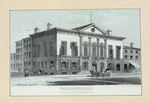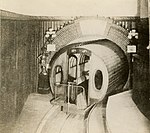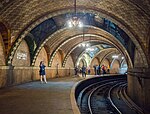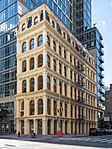Tower 270

Tower 270 (also known as 270 Broadway, Arthur Levitt State Office Building, 80 Chambers Street, and 86 Chambers Street) is a 28-story mixed use building in the Civic Center and Tribeca neighborhoods of Manhattan, New York City. Completed in 1930 to designs by E.H. Faile & Company, it has 350,785 square feet (32,589.0 m2) of floor space, on a plot with 50 feet (15 m) facing Broadway to the east and 242 feet (74 m) on Chambers Street to the north. Tower 270 is just west of New York City Hall, near several other structures, including the Broadway–Chambers Building, 280 Broadway, and the Tweed Courthouse.It housed the first headquarters of the Manhattan Project in 1942–43.
Excerpt from the Wikipedia article Tower 270 (License: CC BY-SA 3.0, Authors, Images).Tower 270
Broadway, New York Manhattan
Geographical coordinates (GPS) Address External links Nearby Places Show on map
Geographical coordinates (GPS)
| Latitude | Longitude |
|---|---|
| N 40.714281 ° | E -74.006765 ° |
Address
Tower 270
Broadway 270
10007 New York, Manhattan
New York, United States
Open on Google Maps










